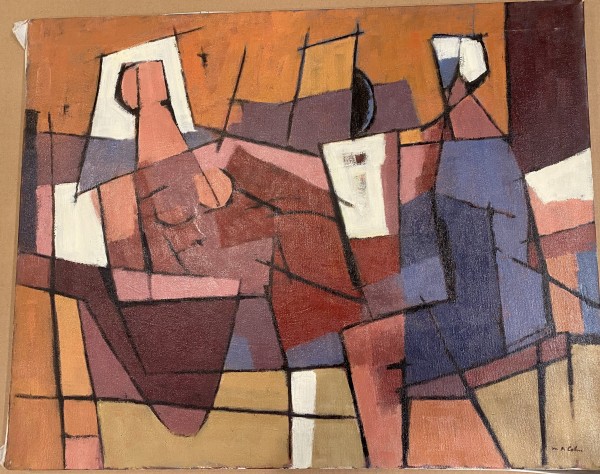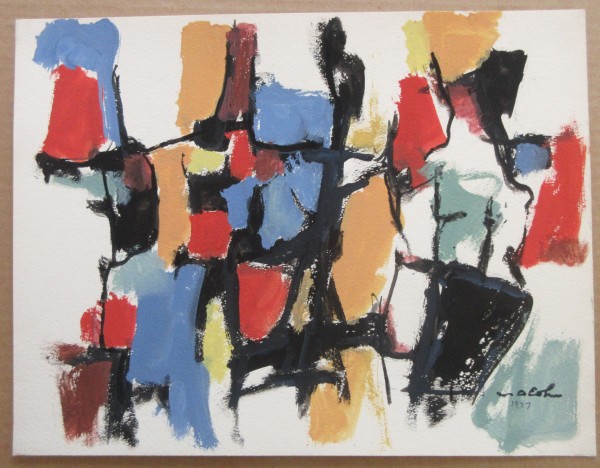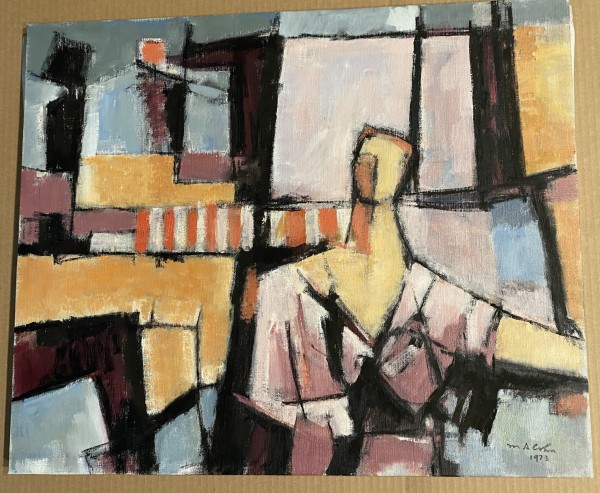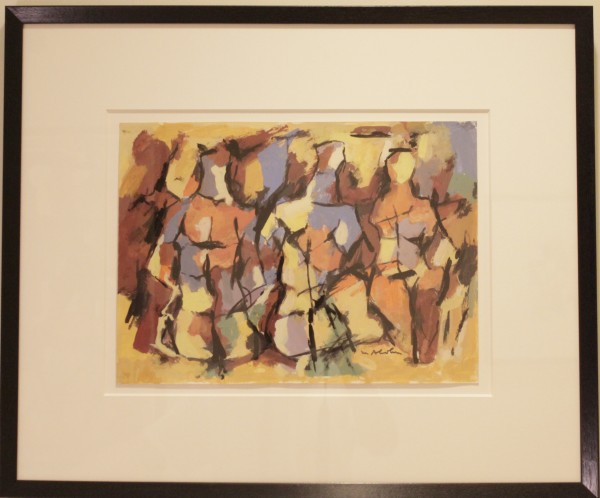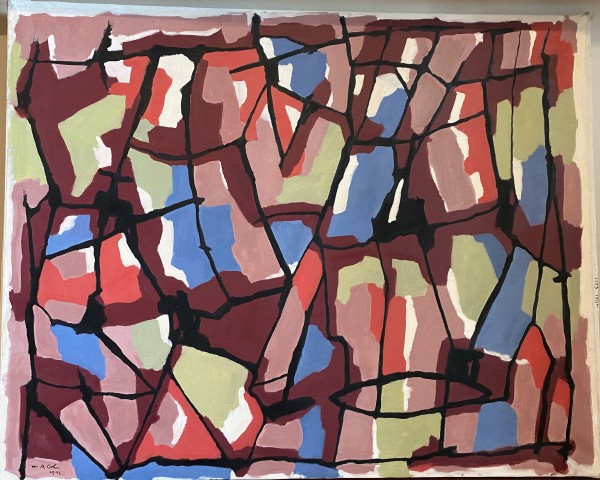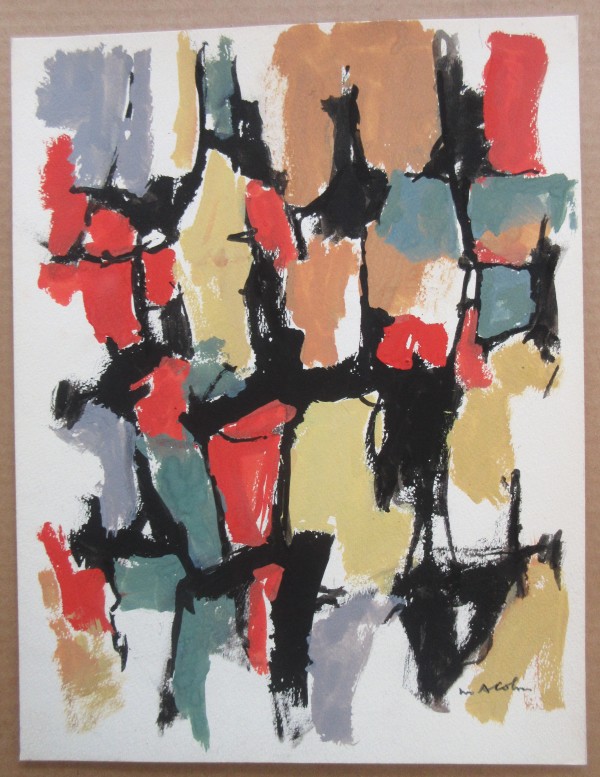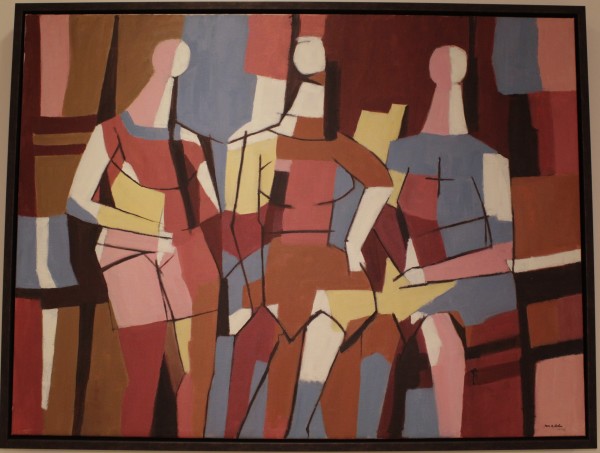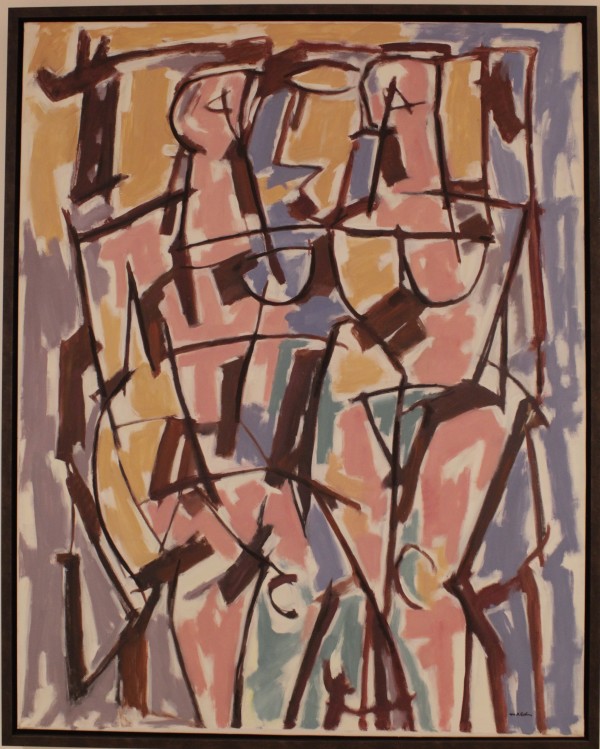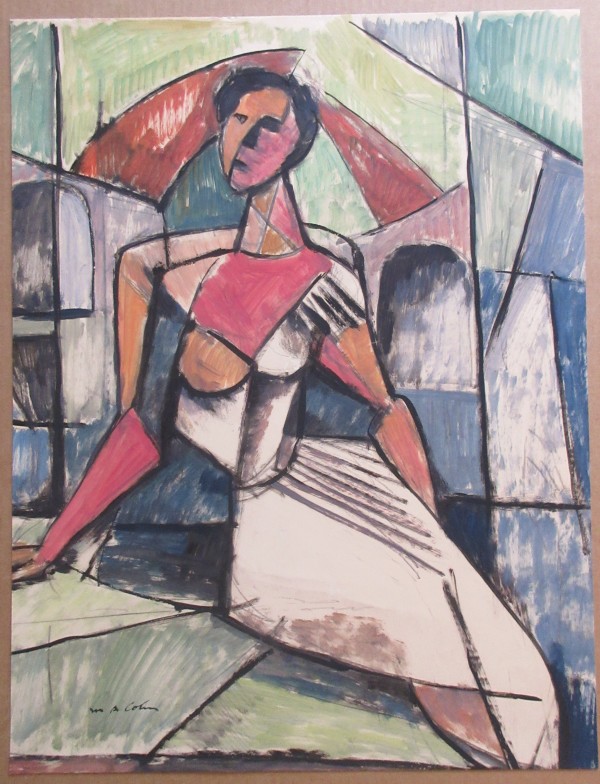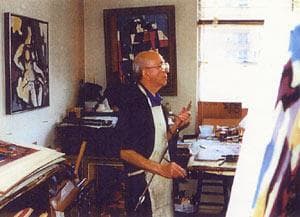
-
Artist: Max Arthur Cohn (American, 1903-1998)
Max Arthur Cohn was born in London in 1903 to Jewish immigrant parents. He emigrated to the U.S. with his family when he was 2 years old and became a naturalized American citizen. Cohn was raised in Cleveland, Ohio and Kingston, NY and moved to New York City at the age of 18 where he worked at a commercial art studio. While there he learned the then new silk screen printing technique—a skill he later put to use in his early pioneering art screen prints. From 1922 to 1924 he studied at the Art Students League as a pupil of Boardman Robinson and John Sloan with classmates including Alexander Calder, Adolph Gottleib, and John Graham.
In 1927 Cohn spent a year in Paris studying at the Académie Colorossi when he also traveled in Italy and Spain. He spent another year in France in 1931, also revisiting Spain. Back in New York in the 1930s, he joined the Easel Project of the NYC WPA/FAP. Cohn married Sarah Waldstein in 1934 and the pair spent a 6-month honeymoon in Mexico where he produced many watercolors and oil paintings of local scenes and people. While NYC remained his home and his inspiration for the rest of his life, Cohn and his wife bought a country home in rural Hunterdon County, New Jersey in the late 1930s. There he created many paintings and prints of the rural scene as well as of nearby industrial Bethlehem and Easton, Pennsylvania.
During the 1940s and 1950s, Cohn worked in commercial silk screen printing to support his wife and daughter Jane. He eventually opened his own shop—Graphic Arts Studio—where he was instrumental in introducing silk screen technique to the young Andy Warhol who worked at the time as a commercial illustrator for I. Miller shoes, one of Cohn’s accounts. Cohn also continued to make art screen prints, served as a founding member of the National Serigraph Society, and co-authored the handbook Silk Screen Stenciling as a Fine Art, 1942, with J. I. Biegeleisen. The book was reprinted as Silk Screen Techniques by Dover Publications in 1958. While he continued to paint part-time during this period, he returned to painting full-time after his daughter Jane graduated college in 1962.
From the 1960s until his death in 1998, Cohn traveled frequently in Europe and the Middle East as well as in Mexico, the Caribbean, and in favorite parts of the U.S. such as the New England coast. Everywhere he traveled he created watercolors which evoked the places he visited in paint, the way others use photographs. Upon returning to New York he often used the watercolors to inform larger oil paintings of the subjects. Cohn’s artwork is represented in numerous museums and private collections including the Metropolitan Museum of Art, the Whitney Museum of American Art, the Art Institute of Chicago, the Smithsonian American Art Museum, and the British Museum. Wisconsin collections include the Milwaukee Art Museum, The University of Wisconsin-Milwaukee Emile Mathis Gallery, the Special Collections of the Golda Meir Library at the University of Wisconsin-Milwaukee, the Chazen Museum of Art at the University of Wisconsin-Madison, and the Crossman Gallery at the University of Wisconsin-Whitewater.
The Jane Cohn Waldbaum & Steven L. Morse collection at Saint John’s On The Lake features a variety of Cohn’s abstract works ranging in date from 1945 to 1992. While Cohn is considered a pioneer in silk screen printing, the Waldbaum & Morse collection features works in gouache on paper and oil on canvas. Over his nearly 80-year career, Cohn explored a variety of mediums, styles, and subjects, often returning to themes and images decades after their first appearances in his work. Many of his pieces reference travel abroad, as well as his surroundings in New York, New Jersey, and Pennsylvania. However, one of the most prominent themes in Cohn’s work is figures of women. Many iterations of the female figure are present throughout the body of Cohn’s work, especially that of daughter Jane, who can be seen reading in numerous abstract paintings.



